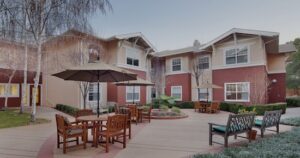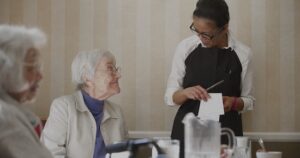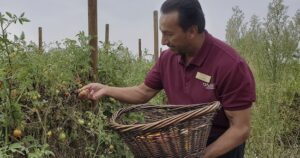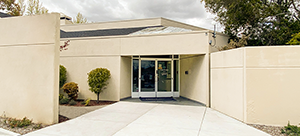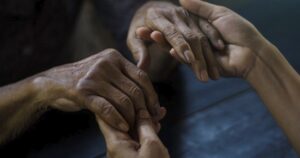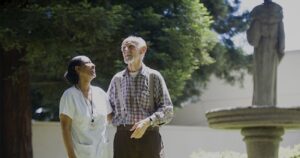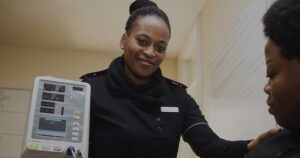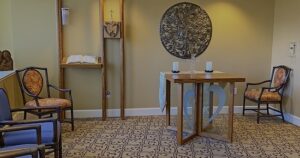In my time as an art therapist with older adults, I’ve encountered many people dealing with low vision. Most notable were two elders who came regularly to art therapy groups. One had life-long vision loss; he was a strong advocate for independence and autonomy. He enjoyed creating clay sculptures and working with textured materials. Another enjoyed painting with watercolor her whole life, until a misinformed MD told her that due to Macular Degeneration, she would “just have to give up on that art-stuff.” His words broke her heart, and she had stopped painting for several years before coming to an Elder Care Alliance community and reconnecting with her joy. I’m happy to report she was painting with me into the very last week of her life (art therapists, if you’re interested in what we did as an adaptation, I’d be happy to share!). The message here is adapt, be creative, and do not limit people.
In one of our communities, a resident spends many hours working on a puzzle. This time spent at the table is not about the puzzle as much as it is being in the community and connecting with others. Staff, family, and visitors will pause, say hello, and help by putting a piece or two into place. Another resident informed the Life Enrichment staff that this elder has trouble with certain puzzles and worked with a high school volunteer to remove all the too-difficult puzzles from the shelves; these puzzles sat in a storage room for a few years—brand new and needing a home. Yesterday, after discovering our new community at Villa San Mateo has a thriving group of puzzle-enthusiasts, I delivered the first box full of puzzles to their new home. This story demonstrates the power of peer-advocacy among older adults and the importance of maintaining dignity. It also represents another of our values—prudent stewardship.
Resources: National Eye Institute
by Erin Partridge PhD ATR-BC
Experiential Researcher in Residence at Elder Care Alliance; Part-time Faculty at Notre Dame de Namur University

